Total Pageviews
Wednesday, September 29, 2010
Saturday, September 25, 2010
Yahoo Plans New Search, Email as It Speeds Release Cycle

Yahoo, in the midst of a corporate turnaround effort, is planning to speed up the pace of new product and feature rollouts, pledging an accelerated roadmap that will see rapid iterations to its core services, including search and email.
Blake Irving, who recently joined Yahoo (NASDAQ: YHOO) as chief product officer, spoke of the company's evolving strategy at an event this week Yahoo dubbed "Product Runway." Irving touted Yahoo's global computing infrastructure that supports the massive traffic to the company's content and services, reminding his audience that Yahoo remains one of the premier brands on the Web.
He also noted the strong ties between Yahoo's research labs and product divisions, explaining that Yahoo benefits from healthy collaboration between the two sides of the house, which in many IT firms effectively operate as silos.
At the same time, he acknowledged that Yahoo needs to do more, both to impress its advertisers and retain consumer loyalty with a swifter pace of innovation and more relevant, personalized content.
"With great technology and great technologists and great labs, you know, there's an opportunity for us to do things better, frankly," Irving said.
"You're going to see things from us over the course of the next year -- course of the [next] year and a half, three years, five years -- that are going to feel a little different to you. We're going to be iterating much more frequently than we do today."
Those changes will begin this fall, with Yahoo detailing plans for upgrades to its core search and email platforms.
In search, Yahoo is billing the fall rollout as one of the "most significant updates" to its search service, which has seen its market share erode in recent years. By one analyst firm's measure of U.S. search queries, Microsoft's search engine eclipsed Yahoo for the first time last month
Yahoo plans to stock its search results for popular or trending queries with a variety of content formats presented in a streamlined, easily navigable layout. Searches for popular entertainment topics or individuals will present results organized by images, news stories, videos, tweets and other types of information, presenting users with an array of one-click bars to display the results in the format of their choosing. Yahoo will offer a similar presentation for news items.
Those new features will roll out as Yahoo continues to transition its search-engineering operations over to Microsoft's (NASDAQ: MSFT) technology as part of a long-term revenue-sharing agreement between the two companies. Yahoo has sought to defuse speculation about its exit from the search market through the partnership, explaining that it will continue to innovate and improve the user-facing layer of its search engine, even if it no longer has a hand in maintaining the underlying infrastructure.
Yahoo is also planning a redesign of its email service, which currently serves some 281 million global users. Later this fall, Yahoo expects to release a beta version of a new, streamlined inbox, boasting a faster response time and new integrations with social services Facebook and Twitter.
The company is also planning to roll out new advertising formats that enable marketers to customize their creatives with messages more precisely tailored to users. A crucial pillar of the company's efforts on the advertising front will be to glean more information about its users' interests and preferences.
Currently, roughly half of the 600 million monthly visitors to Yahoo are logged in when they visit one of the company's sites, Irving said. Yahoo is now "striving for 100 percent authentication," he said, explaining that the company will begin accepting login credentials from Facebook, Twitter and other open ID schemes.
"The vision is bringing personal meaning to the Web," Irving said. "Using insights and data, we're going to understand what brings personal meaning to individuals on the Web. And that doesn't just mean owned-and-operated sites. It means across the Web."
Kenneth Corbin is an associate editor at InternetNews.com, the news service of Internet.com, the network for technology professionals.
Priceline.com Offers New Incentives For Online Travel

Priceline.com has introduced the “Priceline Big Deal Guarantee” for all of its Name Your Own Price travel services, including airline tickets, hotel rooms, rental cars and Priceline Vacation Packages.
When a users books a Name Your Own Price airline ticket, hotel room, rental car or Priceline Vacation Package and finds a better price online
Amazon Launches Mom Program With Free Shipping

Amazon.com has launched Amazon Mom, a new free membership program that offers exclusive promotions and discounts available only to parents and caregivers from the prenatal stage through the toddler years.
Tuesday, September 21, 2010
India to be fastest growing economy by 2018: Economist
NEW DELHI: India is the second largest growing economy after China, but it will overtake its neighbouring country by 2018, the Economist Intelligence Unit (EIU), the research arm of London-based Economist magazine, said Tuesday.
"We forecast that India will overtake China as the fastest growing major economy by 2018. We expect India's growth on an average of eight percent in the next five years," EIU senior analyst Anjalika Bardalai told reporters on the sidelines of 14th Business Roundtable here.
She said the Indian economy would grow at 6.8 percent during the current fiscal, at 7.7 percent in 2010-11, and 8 percent the year later.
But the statistical arm of the Indian government, the Central Statistical Organisation, has projected the economy to grow by 7.2 percent in the current fiscal.
"Our growth projection is based on expenditures in the economy and is not based on factor cost as done by the Indian government," Bardalai explained.
The Indian government measures growth on the basis of factor cost. Factor cost is the cost of factors of production used to produce final goods and services.
India's GDP during the three quarters in the current fiscal grew at 6.1 percent, 7.9 percent and 6 percent. While during 2008-09 it grew at 6.7 percent and in 2007-08 at 9.1 percent.
"The GDP will not return back to 9 percent and more as it was during 2005-08. Also the monetary pressure may not go down as expected," The Economist executive editor Daniel Franklin said.
Driven by increasing food prices, India's annual rate of inflation, based on the wholesale price index, rose to 9.89 percent in February from 8.56 percent in the previous month, according to an official data revealed Monday.
It also predicted inflow of investments through Foreign Institutional Investors (FII) at $75 billion by 2014.
"We forecast that India will overtake China as the fastest growing major economy by 2018. We expect India's growth on an average of eight percent in the next five years," EIU senior analyst Anjalika Bardalai told reporters on the sidelines of 14th Business Roundtable here.
She said the Indian economy would grow at 6.8 percent during the current fiscal, at 7.7 percent in 2010-11, and 8 percent the year later.
But the statistical arm of the Indian government, the Central Statistical Organisation, has projected the economy to grow by 7.2 percent in the current fiscal.
"Our growth projection is based on expenditures in the economy and is not based on factor cost as done by the Indian government," Bardalai explained.
The Indian government measures growth on the basis of factor cost. Factor cost is the cost of factors of production used to produce final goods and services.
India's GDP during the three quarters in the current fiscal grew at 6.1 percent, 7.9 percent and 6 percent. While during 2008-09 it grew at 6.7 percent and in 2007-08 at 9.1 percent.
"The GDP will not return back to 9 percent and more as it was during 2005-08. Also the monetary pressure may not go down as expected," The Economist executive editor Daniel Franklin said.
Driven by increasing food prices, India's annual rate of inflation, based on the wholesale price index, rose to 9.89 percent in February from 8.56 percent in the previous month, according to an official data revealed Monday.
It also predicted inflow of investments through Foreign Institutional Investors (FII) at $75 billion by 2014.
Monday, September 20, 2010
Vikas Kedia Young Entrepreneur
 Vikas Kedia
Vikas KediaFounder & Partner: MobiTrail
www.mobitrail.com
Bombay, India
Age: 25
The next big platform shift in online gaming will be to mobile handsets, and Kedia thinks his company is positioned to capture that growth. This 25-year-old programmer based in Bombay is founder of MobiTrail, which develops and delivers games to mobile phone users. Its games and applications can run on networks using J2ME, Symbian, and BREW operating systems. The company is developing some hot games of its own and has such clients as Reliant Online Gaming in India and Hong Kong-based Mobile2win, as well as other international customers.
Sasikanth Chemalamudi Young Entrepreneur
 Sasikanth Chemalamudi
Sasikanth ChemalamudiCEO: Habits
www.habits.in
Hyderabad, India
Age: 23
A graduate with honors from the Birla Institute of Technology & Science in Pilani, Chemalamudi turned down an offer from outsourcing powerhouse Infosys to pursue his passion for entrepreneurship. He co-launched Habits, a creative learning resources company that encourages more creative thinking with the aid of educational materials such as musicals, plays, and interactive games. Habits is also involved with projects in rural India to encourage self-employment.
Divyank Young Entrepreuneur
www.directi.com
Bombay, India
Age: 24
Turakhia tried his hand at Internet consulting in high school at age 14 and, two years later, launched Directi Group with $600 borrowed from his parents. In the first month of operations, the business managed to generate enough revenues to return the borrowed amount and get the company rolling. Today, the company is debt-free, has more than 1 million customers for its array of domain name registration, Web hosting, and site building services, and employs more than 250 people. It is one of the fastest-growing domain registration companies in the world. When Turakhia isn’t running the show, he pursues hobbies such as sky diving, paragliding, and flying airplanes.
Sunday, September 19, 2010
Sony New Walkman Ad!
Rocking Advertisement which shows the Sony Brand loyalty and Attractive product View. I vote it 9.5/10
Dove Hair Breakage Repair Theraphy Shampoo
I like this advertisement bcoz it shows some stuffs inside the shampoo that is proven visually. It attracts the teenage womens in the way of how they advertise with the models. I vote it 7/10
My Favourite Ad
I like this advertisement because, how a father teaches his son of how the germs attack his teeth and how to protect it from using Pepsodent. I vote this Ad 6/10
Saturday, September 18, 2010
The Marina Beach
The 13-kilometre long Marina Beach forms the city's east coast, from Fort St. George all the way to 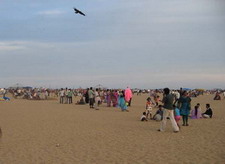 Mahabalipuram and is one of the longest beaches in the world. The Marina Beach is a sandy beach and is the most sought-after beach for many. A visit to the Marina Beach is an enchanting experience for a traveller.
Mahabalipuram and is one of the longest beaches in the world. The Marina Beach is a sandy beach and is the most sought-after beach for many. A visit to the Marina Beach is an enchanting experience for a traveller.
There are many statues adorn the roadside alo ng the beach which includes statues of Mahatma Gandhi, Kannagi, Thiruvalluvar, Sir Thomas Munro, Kamarajar, Avvaiyar, Thanthai Periyar and the Statue of Labour. At one end of the beach is Anna Square where the former Chief Minister of Tamilnadu Dr. C.N.Annadurai was buried. Next to the Anna Sqaure is MGR Samathi and a beautiful park. This is a memorial for Dr.M.G. Ramachandran, the former Chief Minister of Tamilnadu and also a former film hero. The tomb has an imposing memorial Pillar and an eternal flame.
ng the beach which includes statues of Mahatma Gandhi, Kannagi, Thiruvalluvar, Sir Thomas Munro, Kamarajar, Avvaiyar, Thanthai Periyar and the Statue of Labour. At one end of the beach is Anna Square where the former Chief Minister of Tamilnadu Dr. C.N.Annadurai was buried. Next to the Anna Sqaure is MGR Samathi and a beautiful park. This is a memorial for Dr.M.G. Ramachandran, the former Chief Minister of Tamilnadu and also a former film hero. The tomb has an imposing memorial Pillar and an eternal flame.
The main road along the Marina is Kamarajar Salai. Many old and historic buildings adorn the side of the road opposite to the beach. The monumental buildings are Senate House of the University of Madras, Chepauk Palace (now P.W.D office), 19th century Presidency College building, Ezhilagam and the Director General of Police office. The beach has new artificial fountains and parks which adds to its beauty.
along the Marina is Kamarajar Salai. Many old and historic buildings adorn the side of the road opposite to the beach. The monumental buildings are Senate House of the University of Madras, Chepauk Palace (now P.W.D office), 19th century Presidency College building, Ezhilagam and the Director General of Police office. The beach has new artificial fountains and parks which adds to its beauty.
There is a swimming pool and an aquarium located opposite to the Presidency college which is a great attraction for tourists. The swimming pool is run by the State Government. The pool offers swimming classes at nominal charges. The aquarium has good collection of marine and fresh water fishes.
 Mahabalipuram and is one of the longest beaches in the world. The Marina Beach is a sandy beach and is the most sought-after beach for many. A visit to the Marina Beach is an enchanting experience for a traveller.
Mahabalipuram and is one of the longest beaches in the world. The Marina Beach is a sandy beach and is the most sought-after beach for many. A visit to the Marina Beach is an enchanting experience for a traveller.There are many statues adorn the roadside alo
 ng the beach which includes statues of Mahatma Gandhi, Kannagi, Thiruvalluvar, Sir Thomas Munro, Kamarajar, Avvaiyar, Thanthai Periyar and the Statue of Labour. At one end of the beach is Anna Square where the former Chief Minister of Tamilnadu Dr. C.N.Annadurai was buried. Next to the Anna Sqaure is MGR Samathi and a beautiful park. This is a memorial for Dr.M.G. Ramachandran, the former Chief Minister of Tamilnadu and also a former film hero. The tomb has an imposing memorial Pillar and an eternal flame.
ng the beach which includes statues of Mahatma Gandhi, Kannagi, Thiruvalluvar, Sir Thomas Munro, Kamarajar, Avvaiyar, Thanthai Periyar and the Statue of Labour. At one end of the beach is Anna Square where the former Chief Minister of Tamilnadu Dr. C.N.Annadurai was buried. Next to the Anna Sqaure is MGR Samathi and a beautiful park. This is a memorial for Dr.M.G. Ramachandran, the former Chief Minister of Tamilnadu and also a former film hero. The tomb has an imposing memorial Pillar and an eternal flame.The main road
 along the Marina is Kamarajar Salai. Many old and historic buildings adorn the side of the road opposite to the beach. The monumental buildings are Senate House of the University of Madras, Chepauk Palace (now P.W.D office), 19th century Presidency College building, Ezhilagam and the Director General of Police office. The beach has new artificial fountains and parks which adds to its beauty.
along the Marina is Kamarajar Salai. Many old and historic buildings adorn the side of the road opposite to the beach. The monumental buildings are Senate House of the University of Madras, Chepauk Palace (now P.W.D office), 19th century Presidency College building, Ezhilagam and the Director General of Police office. The beach has new artificial fountains and parks which adds to its beauty.There is a swimming pool and an aquarium located opposite to the Presidency college which is a great attraction for tourists. The swimming pool is run by the State Government. The pool offers swimming classes at nominal charges. The aquarium has good collection of marine and fresh water fishes.

At the southern end of the Marina Beach is the new Light House. It stands 48m above sea level and offers a panoramic view of the city. The light house is open to visitors from 2pm to 4pm.
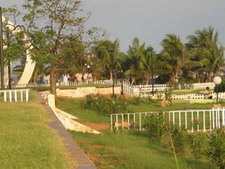 The recent Tsunami (December 26, 2004) claimed a lot of lives in the beach. Despite the destruction caused by the Tsunami waves, the beach has regained its pristine beauty because of the hardworking community.
The recent Tsunami (December 26, 2004) claimed a lot of lives in the beach. Despite the destruction caused by the Tsunami waves, the beach has regained its pristine beauty because of the hardworking community.The beach can be visited in early mornings or in the evenings. There are many food stalls, hawkers and many entertainers line the beach at these times to entertain the visitors. Kite flying is a major sport for children at the beach.
Chennai History
 |
| Chennai, formerly called Madras, has been present since times immemorial. Whatever is known about the capital city of Tamil Nadu, presently serves as the history of the modern city. Originally Chennai was a cluster of villages, perched amidst paddy fields, bordered by palm trees. The Pallavas, the Cholas, the Pandyas and the Vijaynagar Empire, all the popular dynasties of South India, have had an influence over the city. The origin of the metropolitan city started in 1639, when Francis Day and Andrew Cogan, two merchants of the East India Company, started a factory-cum-trading post here. A settlement was built to serve as the control centre and it was completed on 23 Apr' 1640, St George's Day and was named as St George's Fort. The native town, officially called George Town, was established outside the ramparts of the Fort. George Town had several crowded lanes and each lane dealt in special trade, serving the British colonists. The Colonial decree made connections with the villages, together with the settlement at San Thome that was established by the Portuguese in the 16th century. The 7th century Pallava Port, Kapalesvara Temple and Parthasarathi Temple are standing testimony to the fact that Chennai had been present since ages. In 1746, Chennai, along with Fort St George, came under the sway of the French, who ransacked the town and the nearby villages. The British again got command over Chennai in 1749, attributable to the Treaty of Aix-la-Chappell. They fortified the area so that this time no pirate could conquer it. By the late 18th century, they were able to overpower most of the region around Tamil Nadu, Andhra Pradesh and Karnataka and founded the Madras Presidency. During the British rule, Chennai went under drastic changes, to become a prominent city, with strong naval base. With the introduction of railways in the late 19th century, Chennai got linked with other important cities like Mumbai and Kolkata. Facilities of trade and communication in the city boosted, connecting it with the hinterland too. Chennai was the only city of India that was attacked during the World War. When India became independent in 1947, Chennai city was declared as the capital of Madras State, which was later renamed as Tamil Nadu in 1968. In 1997, the Government of Tamil Nadu officially changed the name of Madras to Chennai. However, it is the colonial rule which developed Chennai into a major commercial center. In the present day, George Town houses most of the pioneer business headquarters, while the State Government has its nerve centre in the Fort St George. |
Thursday, September 16, 2010
General Motors OnStar system gets Facebook support
 |
If you need to check status updates even when you’re driving, Facebook and General Motors have a solution for you. As you might remember, there has been a rumor that General Motors OnStar system might get a Facebook integration so that you can receive status updates from your Facebook account while you’re driving. This is not a rumor anymore and it seems that Facebook and General Motors have taken this quite seriously. |
Microsoft's new IE9 promises zippier performance
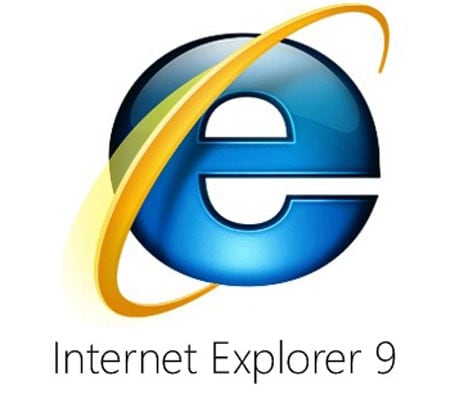 |
Microsoft Corp. unveiled the "beta" test version of Internet Explorer 9 on Wednesday, the first of a new generation of Web browser programs that tap into the powerful processors on board newer computers to make websites load and run faster. IE9, which is free, also arrives with a more minimalist look and a few new tricks that start to blur the distinction between a website and a traditional desktop application. Following the lead of Google Inc.'s stripped-down Chrome browser, Microsoft's IE9 comes with far fewer buttons, icons and toolbars cluttering up the top of the screen. Its frame is translucent, and as people browse the Web, IE9 can be subtly adorned with small icons and signature colors of the websites being viewed. The new browser also takes cues from Windows 7, Microsoft's most recent operating system software for personal computers. In Windows 7, people can "pin" favorite programs to the task bar at the bottom of the screen, creating a one-click shortcut. They can also customize a menu of options for each program, such as opening a frequently used file in Microsoft Word. IE9 lets people pin individual websites to the taskbar, and some sites have already customized their so-called "jumplist" menus. For example, when people pin USA Today's site, the icon in the taskbar can display a menu that mirrors the color-coded sections of the newspaper. The aesthetic changes bring IE9 in line with Microsoft's newer software, but the changes under the hood push Microsoft's technology a step ahead of its competition. The browser can take advantage of multicore microprocessors to crunch website code faster. It also uses the PC's graphics processing unit the same chips that make the images in elaborate video games run smoothly to make images, animations, movie clips and other visuals appear or play faster. And IE9 supports HTML5, a catch phrase for an updated set of rules and specifications that website programmers use. HTML5, which is currently under development, will include video playback and other graphics-intensive features that, in the past, could only be done by adding third-party software. "What I saw impressed me," said Endpoint Technologies Associates analyst Roger Kay, who attended Microsoft's media event to promote the new browser in San Francisco Wednesday. "The bottom line is, this product is good. It's pretty and it's fast." Microsoft won't stand alone at the front of the pack for long, however. Google and Mozilla, maker of the Firefox browser, are also working on similar technical upgrades to their software. All three players have different motivations for pouring resources into making their free programs stand out from the pack. For Microsoft, selling Windows is a massive and profitable slice of its business. Dean Hachamovitch, corporate vice president of Microsoft's Internet Explorer group, said the software maker is driven by the desire to make Web browsing on a Windows PC "great." That, he said, will encourage people to keep buying Windows computers, rather than defect to Apple Inc.'s Mac machines. Google, which makes most of its money from online advertising, simply wants to encourage people to spend more time surfing the Web. The Web search leader says it introduced the speedy Chrome two years ago in part to prod the market's dominant players to accelerate Web surfing. And Mozilla, a nonprofit, sees its own browser development as a way to make sure that users' privacy and the tenets of free, open-source software don't get left behind as Google, Microsoft and others try to shape technology in ways that boost profits. With the new crop of browsers, the companies are doing more than competing against each other. IE9 has arrived at a time when the future of traditional Web surfing is itself in question. Today, people can skip visiting many websites in favor of "apps" available for download for devices such as Apple's iPhone and iPad, or Google's Android mobile phones. The apps deliver the same content but don't limit people to pointing and clicking links with a mouse. The new browser works on PCs with Windows 7 or Vista, but not on PCs with the much more widely used Windows XP computers or on Macs. At the media event, Microsoft showed off several big-name websites that have been designed to take advantage of the new browser, including ones from Amazon.com Inc., Facebook and Twitter. The sites are built with code that older browsers can understand, but some may be sluggish without IE9. Microsoft did not say when IE9 will leave the test phase, but the final version isn't likely to change much. It is available for download at beautyoftheweb.com. |
Twitter unveils revamped, user-friendly website
 |
| Micro-blogging site Twitter has unveiled a revamped website that will make it easier for users to check images and videos, besides helping the company to attract more advertisers. The "re-engineered" Twitter.com, aimed at providing an "easier, faster and richer experience" is expected to roll out around the world in the next few days. The website is now split into two panes. One is devoted to messages or "tweets" posted on Twitter each day, and the other will feature photos, videos, replies and other information related to a Tweet's author or subject. "This is really a complete revamp...It is going to increase the value that people are getting out of Twitter, so in less time you can get more information and value," Twitter's co-founder and chief executive Evan Williams said. Users will now be able to see embedded photos and videos directly on Twitter, unlike previously when such multi-media was displayed on other websites or browser tabs. The company has reached agreements to display content from more than a dozen online photo and video sites, including Google-owned YouTube, Yahoo's Flickr, GoJustin.TV, Twitgoo, TwitPic, TwitVid, Ustream, Vimeo, and yfrog. The redesigned site also makes it simpler to see information about authors of Twitter posts and conversations among Twitter users. "This is really a complete revamp," Williams said, adding, "Once you start using it, what you are going to see is that everything is very responsive... The entire front end is re-engineered to be more agile, more responsive." The new features are aimed at attracting more advertisers to Twitter.com that faces stiff competition from social networking site Facebook. The four-year-old San Francisco company is developing a platform for advertisers who want to promote products and services. Twitter has more than 160 million customers, while Facebook has over 500 million users. While it's easy for Facebook users to upload photos and compose messages to be shared with friends, most Twitter customers don't post many messages or share links, Williams said. They mainly read what others post about events, disasters and their own lives. (More) PTI YAS The changes would roll out as a preview over the next several weeks. During the preview, users would be able to switch back and forth between the old and new format giving them time to grow accustomed to the new look. "Eventually, everyone will have the updated version of Twitter.com," Williams said. Twitter.com, which had about 24 million unique visitors last month, has been a simple website with few features. More than 90 million messages or tweets are posted daily on Twitter. Increasingly, government agencies, news organisations and celebrities around the world are using Twitter to share information or links with followers on the site. The company had said majority of its users are outside the US in countries such as Japan, South Korea, Brazil and Indonesia. |
Tuesday, September 14, 2010
BenQ launches the world's first VA LED monitors.
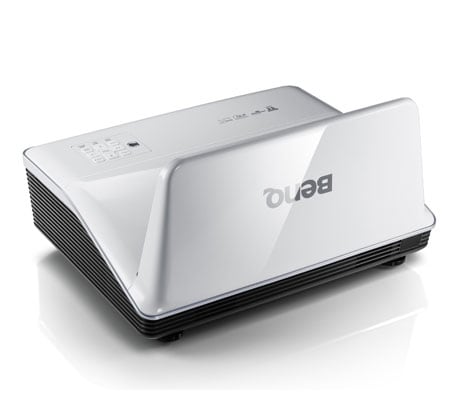
BenQ, today launched world's first Vertical Alignment (VA) LED monitors - The EW and VW series. The lineup of the 16:9 Full HD VA-panel LED monitors include: EW2420 (24"); VW2420 (H) (24") and VW2220 (H) (21.5"). With a wider viewing angle at 178 /178 , True 3,000:1 Native Contrast Ratio and BenQ's proprietary Senseye Human Vision Technology all on a true 8-bit panel, these VA LED monitors significantly enhance the viewing pleasure for all.
VA LED-based panel has better color reproduction, an ultra high contrast ratio, display blacks more accurately because of its capability to produce true black with zero bright dot (ZBD) and able to minimize light leakage. To display blacks more accurately means these VA LED-based panels have better contrast and detail in dark-colored movie scenes. VA panels are also known to have a wider viewing angle (178 /178 ) compared to a regular Twisted Nematic (TN) panel before notable brightness and color shifts, so your monitor can be shared across the room with more people, with more angles, more fun.
Aiming at consumers with a sophisticated taste and those who yearn for a stylish lifestyle, the VW series adopts the same design from BenQ's award winning V Series monitors (2010 iF Design Award) with a change of a gold metal ring at base, carrying forth the smooth contours and clean lines complemented by the lacquer finish. On the other hand, the EW series appeal more towards the digital video enthusiasts as it comes equipped with a wide range of ports, enhancing the enjoyment of user's video viewing without interruption. Users can keep an array of digital devices permanently plugged in simultaneously and switch between gaming console, DVD player, webcam, PC, iPod, and others without the need for plugging, unplugging and switching cables. Complementing this, it has a considerate design of headphone hanger on the back of the monitor to conveniently help users store their headsets.
The VW/EW Series is further enhanced by BenQ's proprietary Senseye Human Vision Technology, producing fuller, richer, clearer and more detailed images, even for the darkest scenes. Senseye 3's six preset modes give users the luxury of one-touch optimization for the most popular applications: Game, Movie, sRGB, Standard, Photo, and Eco modes. Today's on-demand consumer will likewise appreciate the VW/EW Series' ability to instantly display content when powered up, another benefit of LED over CCFL technology. Moreover, BenQ's sRGB colour consistency on a true 8-bit panel (16.7M colour panel) allows users to have a convenient way to get consistent colours. Be confident that the colours shown on screen are the colours to be printed.
DVI and D-Sub are equipped on all VW series while HDMI 1.3 and headphone jack are available on models designated with an "H"; whereas the EW series comes equipped with DVI-D; HDMI x2; D-Sub; USB x4; Line-in; headphone jack and 1.5W x2 audio speakers - offering diverse connectivity options consumers demand.
BenQ VA LED monitor series are available at the following price- VW2420 Rs.19990/- and EW2420 Rs. 21990/- All models are available across India.
Logitech introduces game-changing gameboard
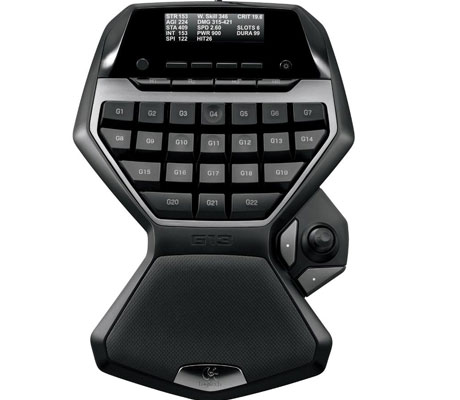
Whether you're rescuing hostages, on a quest with your guild or saving humanity, you don't want to worry about hand fatigue or hitting the wrong key.
Logitech has recently introduced the Logitech G13 Advanced Gameboard - a hybrid gaming keyboard designed to complement your Logitech keyboard and mouse - giving you game-changing comfort and control on a Mac computer or a PC.
"If you're into serious gaming, there's no better feeling than playing with the G13 gameboard by your side," said Ruben Mookerjee, Logitech's director of product marketing for gaming. "Unlike other gameboards that focus only on programmability, the G13 advanced gameboard incorporates the principles of our award-winning Comfort Wave design. So whether you're getting into World of Warcraft or walking into your next LAN party, the G13 gameboard gives you a powerful advantage over those forced to work with less."
With its sculpted, ergonomically inspired shape and pushing-the-envelope functionality, the Logitech G13 advanced gameboard completes your search for gaming gear.
Delivering increased comfort, the iconic contoured design complements the natural shape of your hand and fingers, while the smooth, concave home-row keys make it easy to locate buttons by touch.
With three game modes, 25 programmable keys and a programmable analog stick, the G13 gameboard offers up to 87 ways for you to control your game (software installation required). And you can set up custom button-profiles for each one of your favorite titles. You can even create macros on the fly without having to pause your game.
"The G13 goes beyond additional gaming buttons and a joystick; it also includes an LCD screen that provides helpful gaming and system stats that gamers will find handy. G13 could be a powerful tool for dedicated gamers, a solid addition to their arsenal. " said Subrotah Biswas, Country Manager, India and South West Asia, Logitech.
And for another tactical advantage, the 160-by-43-pixel GamePanel LCD shows live game stats, system info and even messages from other players. With the G13 gameboard, you'll also get backlit keys that help you easily locate the right key in low-light conditions or lights-out play. And you can select from hundreds of available backlight colors, so your gameboard looks just the way you want it.
A handy solution for the laptop gamer, the G13 gameboard includes onboard memory, letting you program up to five ready-to-play profiles and take them with you to your next LAN party. The G13 gameboard also offers pre-configured settings for many popular games, including World of Warcraft: Burning Crusade, Lord of the Rings Online: Shadows of Angmar , Call of Duty 4: Modern Warfare and many others.
With its sturdy weight and strategically placed feet, the G13 gameboard won't move during gameplay, giving you rock-solid support all the way to victory.
Logitech has recently introduced the Logitech G13 Advanced Gameboard - a hybrid gaming keyboard designed to complement your Logitech keyboard and mouse - giving you game-changing comfort and control on a Mac computer or a PC.
"If you're into serious gaming, there's no better feeling than playing with the G13 gameboard by your side," said Ruben Mookerjee, Logitech's director of product marketing for gaming. "Unlike other gameboards that focus only on programmability, the G13 advanced gameboard incorporates the principles of our award-winning Comfort Wave design. So whether you're getting into World of Warcraft or walking into your next LAN party, the G13 gameboard gives you a powerful advantage over those forced to work with less."
With its sculpted, ergonomically inspired shape and pushing-the-envelope functionality, the Logitech G13 advanced gameboard completes your search for gaming gear.
Delivering increased comfort, the iconic contoured design complements the natural shape of your hand and fingers, while the smooth, concave home-row keys make it easy to locate buttons by touch.
With three game modes, 25 programmable keys and a programmable analog stick, the G13 gameboard offers up to 87 ways for you to control your game (software installation required). And you can set up custom button-profiles for each one of your favorite titles. You can even create macros on the fly without having to pause your game.
"The G13 goes beyond additional gaming buttons and a joystick; it also includes an LCD screen that provides helpful gaming and system stats that gamers will find handy. G13 could be a powerful tool for dedicated gamers, a solid addition to their arsenal. " said Subrotah Biswas, Country Manager, India and South West Asia, Logitech.
And for another tactical advantage, the 160-by-43-pixel GamePanel LCD shows live game stats, system info and even messages from other players. With the G13 gameboard, you'll also get backlit keys that help you easily locate the right key in low-light conditions or lights-out play. And you can select from hundreds of available backlight colors, so your gameboard looks just the way you want it.
A handy solution for the laptop gamer, the G13 gameboard includes onboard memory, letting you program up to five ready-to-play profiles and take them with you to your next LAN party. The G13 gameboard also offers pre-configured settings for many popular games, including World of Warcraft: Burning Crusade, Lord of the Rings Online: Shadows of Angmar , Call of Duty 4: Modern Warfare and many others.
With its sturdy weight and strategically placed feet, the G13 gameboard won't move during gameplay, giving you rock-solid support all the way to victory.
Why did the PSP Go fail?
Why did the PSP Go fail?
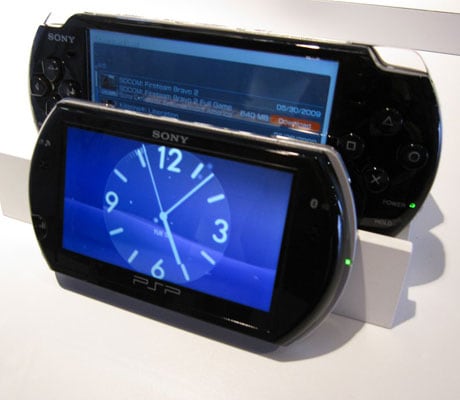
Launched in October of 2009; it s nearly been a year since Sony launched a revamped version of its portable gaming device and boy-o-boy has it been a disappointment. Sales figures themselves show that Sony s PSP 3000 the last iteration of Sony s original PSP design still sells more than the PSP Go!
Why? For starters, PSP 3000 has a Universal Media Disc or UMD drive which Sony very conveniently removed from the PSP Go as it wanted the Go to be a download only based gaming system. To be fair, Sony did support the Go pretty well by giving the system 16GB inbuilt flash memory expandable up to 32GB via M2 memory cards and a good lineup of games for download during launch.
This system of Sony s may have actually worked had it not been for one tiny problem. The existence of hundreds and hundreds of UMD s not only available in the market but also in consumer s homes. This is really not a problem if you are a new user as a fresh system would mean a fresh collection of games. But if you re like me, you probably own one of the older PSP s and have a sweet collection of UMD games. Before the launch of the GO however, there were rumors that if you upgraded to a Go, you could trade in your UMD s and be able to download the same game for free. However, those rumors didn't prove to be true and so the PSP Go story didn't play out as Sony would have liked!
Don t think the Go is a bad device. Not at all! On the face of it, Go is superior to the PSP 3000 in terms of display brightness, speakers, feel. But, the screen was smaller than the 3000 at 3.8 inches as compared to 4.3 inches on PSP 3000.
Sony did admit that the shift to digital distribution only was an experiment, to what cause? Is still a mystery to me! Majority of the world s gamers population still prefers to own physical copies of a game as compared to a digital version. It makes more sense as it is easier to exchange games with friends, sell them for 2nd hand once you re done with them. Call me old fashioned but just the feel of a brand new game in my hand cannot be replaced with a digital download. Also the fact that the PSP has penetrated markets where internet penetration is still low (such as India), so it does make sense for Sony to stick to the physical form of distributing games.
Though some may argue that digital distribution is more convenient for the content provider as they don t have to worry about transportation, lower production cost, commission of middlemen like retailers, etc.
Sony also faced problems from retailers in terms of the PSP GO. Once a retailer sells a gaming system, he has a potential client who will keep coming back for the games. In terms of the GO however, once the system is sold, there is no scope of the retailer selling the games for that system. That really didn t go down well with the retailers!
Sony s portable device has an unmatched lineup of games such as God of War, Resistance Retribution, Locoroko, Patapon, Metal Gear Solid, GTA, Castelvania, Tomb Rader, Tekken, Gran Turismo, just to name a few. This does make it the king of portable hardcore gaming! I would really love to upgrade to a PSP GO for it's sleek, small look that fits well in my back pocket. But then what am I to do with the 50+ UMD s lying in my drawer? No wonder the PSP 3000 still outsells the PSP GO by a mile!
Why? For starters, PSP 3000 has a Universal Media Disc or UMD drive which Sony very conveniently removed from the PSP Go as it wanted the Go to be a download only based gaming system. To be fair, Sony did support the Go pretty well by giving the system 16GB inbuilt flash memory expandable up to 32GB via M2 memory cards and a good lineup of games for download during launch.
This system of Sony s may have actually worked had it not been for one tiny problem. The existence of hundreds and hundreds of UMD s not only available in the market but also in consumer s homes. This is really not a problem if you are a new user as a fresh system would mean a fresh collection of games. But if you re like me, you probably own one of the older PSP s and have a sweet collection of UMD games. Before the launch of the GO however, there were rumors that if you upgraded to a Go, you could trade in your UMD s and be able to download the same game for free. However, those rumors didn't prove to be true and so the PSP Go story didn't play out as Sony would have liked!
Don t think the Go is a bad device. Not at all! On the face of it, Go is superior to the PSP 3000 in terms of display brightness, speakers, feel. But, the screen was smaller than the 3000 at 3.8 inches as compared to 4.3 inches on PSP 3000.
Sony did admit that the shift to digital distribution only was an experiment, to what cause? Is still a mystery to me! Majority of the world s gamers population still prefers to own physical copies of a game as compared to a digital version. It makes more sense as it is easier to exchange games with friends, sell them for 2nd hand once you re done with them. Call me old fashioned but just the feel of a brand new game in my hand cannot be replaced with a digital download. Also the fact that the PSP has penetrated markets where internet penetration is still low (such as India), so it does make sense for Sony to stick to the physical form of distributing games.
Though some may argue that digital distribution is more convenient for the content provider as they don t have to worry about transportation, lower production cost, commission of middlemen like retailers, etc.
Sony also faced problems from retailers in terms of the PSP GO. Once a retailer sells a gaming system, he has a potential client who will keep coming back for the games. In terms of the GO however, once the system is sold, there is no scope of the retailer selling the games for that system. That really didn t go down well with the retailers!
Sony s portable device has an unmatched lineup of games such as God of War, Resistance Retribution, Locoroko, Patapon, Metal Gear Solid, GTA, Castelvania, Tomb Rader, Tekken, Gran Turismo, just to name a few. This does make it the king of portable hardcore gaming! I would really love to upgrade to a PSP GO for it's sleek, small look that fits well in my back pocket. But then what am I to do with the 50+ UMD s lying in my drawer? No wonder the PSP 3000 still outsells the PSP GO by a mile!
AppNation rises in booming world of smartphone programs

A first-ever AppNation conference kicked off in San Francisco on Monday as a forum for sharing ways to prosper from programs tailored for the fast-growing array of gadgets linked to the Internet.
"The word has just started to get out that there is gold in them there hills," AppNation chairman Drew Ianni told AFP.
"The gold was discovered a couple of years ago with Apple and now the rush is beginning."
Mobile applications have been around since the late 1990s but began to flourish after Apple launched its App Store for iPhone and iPod Touch devices in mid-2008.
An independent study released by GetJar, the world's second largest app store, early this year indicated that the market for mobile device software programs should rocket to 17.5 billion dollars (US) within three years.
The annual market for mobile applications is six billion dollars. Internet firms large and small are racing to offer services that tap into geo-location, camera, touch-screen and other features of mobile phones.
"You need to get top-rank to make a lot of money," said Brian Lee of Pen Power, the California firm behind a World Card iPhone app that enters contact information in address books by taking pictures of business cards.
"Making apps is getting more competitive."
Downloads of mobile applications to handsets will leap from slightly more than seven billion in 2009 to nearly 50 billion in 2012, according to the GetJar study.
Applications resonate with smartphone users because they typically do a single desired task well, according to Mashery chief executive Oren Michels.
"A great app grants a wish -- book a hotel room, get a taxi, buy a television," Michels said. "You are not trying to cram the entire Web experience into a smartphone with a small screen. You narrow down."
Mashery, which was among the firms on the AppNation expo floor, specializes in using applications to help companies connect with their audiences on any type of Internet Age device.
"People are fickle," Michels said. "If an app sucks, they won't use it. Software makers optimize for each device."
The list of AppNation sponsors included Alcatel-Lucent, GetJar, Yahoo!, Microsoft, BlackBerry, LG, and Nvidia.
In yet another sign of an app gold rush, more than 1,000 people registered for AppNation beating the expectations of organizers.
"This tells us that we are onto something," Ianni said. "This is a heads-up that a non-Web-but-on-the-Internet world is emerging. You need to be aware of it, and you need to respect it."
A notion building at AppNation was that traditional Web surfing using a browser is being supplanted by applications that take users directly to the content or service they want on the Internet.
"The Web is dead, long live the Internet," Ianni said, echoing a phrase freely used at AppNation.
"The average person doesn't care whether it is a native app or it is running on the Web, they just want their content."
AppNation is taking place just a few blocks from where GetJar in July hosted the first Gettie Awards honoring application makers in a style fashioned after the renowned Academy Awards in Hollywood.
A team of young hip-hop dancers and a comic hostess whose outfits included a Lady Gaga spin-off called "Lady GetJar" entertained the audience in the posh ballroom where the awards were handed out.
Top winners in seven categories were chosen from some 7,000 nominations from more than 100 countries and GetJar executives marveled at how the app industry barely existed two years earlier.
"What an amazing night -- with some of the best developers on the planet at the Gettie Awards ceremony," said GetJar chief marketing officer Patrick Mork.
Monday, September 13, 2010
Will Cloud Computing plays a major role in coming days?
Cloud computing is nothing but virtualization of software, services etc... which reduces the human work...
Pros is human resources is optimized and cost is reduced
Cons is there is unemployment issue occurs...
Friends u also discuss about this cloud computing....
Sunday, September 12, 2010
Samsung Unveils World's Largest See-through OLED Laptop
Jan 11, 2010
 Samsung has come up with a brand new impressive gadget, which the company presented at CES 2010. Its main feature is transparency.
Samsung has come up with a brand new impressive gadget, which the company presented at CES 2010. Its main feature is transparency.The device is a laptop concept that boasts a 14-inch OLED display. The latter becomes about 40 percent transparent when you turn off the laptop.
The company says that its new laptop is the world's largest see-through OLED laptop. Currently there's not much information on the device. It is known that there's a 4.3-inch screen resolution of 320 x 480 pixels.
Samsung looks forward to apply the new technology in a number of other devices such as smartphones, MP3 players and head-up displays for cars.
Sony Unveils 3D Vaio Laptop at IFA 2010
 The famous Japanese tech company Sony looks forward to become the first to introduce to the world 3D laptops with 1080p display capabilities.
The famous Japanese tech company Sony looks forward to become the first to introduce to the world 3D laptops with 1080p display capabilities.Recently the firm presented its 3D Vaio laptop prototype at IFA 2010.
It is expected that the new 3D Vaio laptop includes 3D button and Bravia shutter glasses in order to part what the right and the left eyes see.
The 16-inch laptop unveiled at IFA 2010 has a 16:9 display and comes with a 240Hz refresh rate, so it would match with the 3D rate of 60 frames per second.
The company plans to launch its 3D laptop in the spring of 2011. The device will include the innards of the Sony Vaio F.
Currently there is no information regarding the price and other features of the laptop, but Sony mentioned that the new device will be somewhat different from the prototype it presented at the press event.
Saturday, September 11, 2010
Tablets launching in India in October 2010
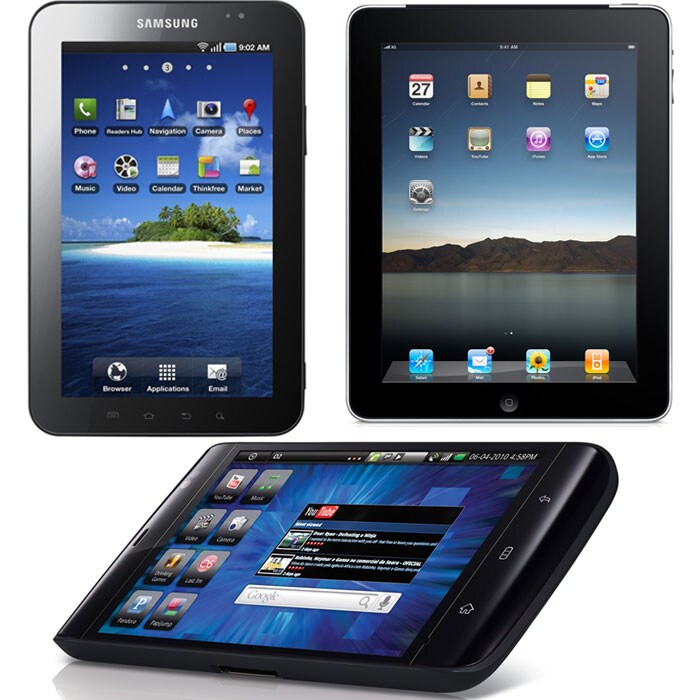 | |
| With Apples iPad pioneering the tablet market but refusing to officially launch in India and the Dell Streak and Samsung Galaxy Tab all set to hit the Indian in October 2010 let's take a quick look at how they stand off against one another. |
New XBOX 360: Review
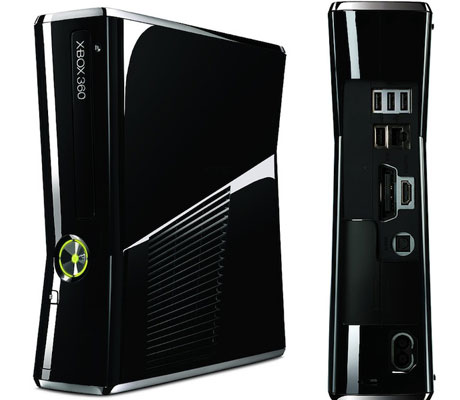 |
| First look and you know, it s scored on the looks. Smaller, sleeker and a whole lot glossier version, the New XBOX 360 is complimented with a rather practical matt finished joystick, to avoid it from becoming a fingerprint magnet. But is it really slim, as being touted around the world? Well the console does shed few inches but nothing radical when placed next to its predecessor, and that may just be the reason why Microsoft christened it the XBOX 360 S, rather than the Slim. The new design also incorporates touch sensitive buttons for power and ejects functions. The connectivity options have also significantly increased, with five USB2.0 ports on offer, along with an AUX port for connecting accessories like Kinect, an HDMI port, and the proprietary AV connector. The console packs in a faster built in Wi-Fi support, along with a whopping 250GB removable Hard disk drive for memory. Making gaming a lot more greener the new 360 consumes only 135W Vs 175 consumed by Elite and Arcade. The new console also packs in a single large fan design instead of the two smaller fans in the previous model, to address the long criticized noise problem during the gameplay. But there still a few niggles left to be frowned upon, as the new 360 misses out on the all important Blu-Ray player, the external power brick could also been easily avoided and while the 360 S does provide you with a HDMI port, there is no HDMI cable in the box. The new XBOX 360 is priced at nearly 22,000 rupees, which making it extremely competitive and a worthy value for price product |
Friday, September 10, 2010
In season 9 iPods still get high ratings
Mind-reading machine converts thoughts into speech
London: A mind reading machine has edged closer to reality after scientists found a way of converting thoughts into words.
Researchers were able to render brain signals into speech for the first time, relying on sensors attached to the brain surface.
The breakthrough, which is up to 90 percent accurate, will be a boon for paralysed patients who cannot speak and could help read anyone's thoughts ultimately, reports the Telegraph.
"We were beside ourselves with excitement when it started working," said Prof Bradley Greger, bioengineer at the Utah University who led the project. "It was just one of the moments when everything came together.
"We have been able to decode spoken words using only signals from the brain with a device that has promise for long-term use in paralysed patients who cannot speak.
"I would call it brain reading and we hope that in two or three years it will be available for use for paralysed patients."
The breakthrough came when the team attached two button-sized grids of 16 tiny electrodes to an epileptic's brain's speech centres, says the journal of Neural Engineering.
The patient had part of his skull removed for another operation to treat his condition.
Using electrodes, the scientists recorded brain signals in a computer as the patient repeatedly read each of 10 words that might be useful to a paralysed person: yes, no, hot, cold, hungry, thirsty, hello, goodbye, more and less.
Then they got him to repeat the words to the computer and it was able to match the brain signals for each word 76 percent to 90 percent of the time.
The computer picked up the patient's brain waves as he talked and did not use any voice recognition software.
Because just thinking a word is enough to produce the same brain signals, Prof Greger and his team believe that soon they will be able to have translation device and voice box that repeats the word you are thinking.
Besides, the brains of paralysed people are just as healthy and produce the same signals as those in physically-fit people - it is just they are blocked by injury from reaching the muscle.
Researchers said the method needs improvement, but could lead in a few years to clinical trials on paralysed people who cannot speak due to so-called "locked-in" syndrome.
"This is proof of concept," Prof Greger said adding: "We've proven these signals can tell you what the person is saying well above chance."
Researchers were able to render brain signals into speech for the first time, relying on sensors attached to the brain surface.
The breakthrough, which is up to 90 percent accurate, will be a boon for paralysed patients who cannot speak and could help read anyone's thoughts ultimately, reports the Telegraph.
"We were beside ourselves with excitement when it started working," said Prof Bradley Greger, bioengineer at the Utah University who led the project. "It was just one of the moments when everything came together.
"We have been able to decode spoken words using only signals from the brain with a device that has promise for long-term use in paralysed patients who cannot speak.
"I would call it brain reading and we hope that in two or three years it will be available for use for paralysed patients."
The breakthrough came when the team attached two button-sized grids of 16 tiny electrodes to an epileptic's brain's speech centres, says the journal of Neural Engineering.
The patient had part of his skull removed for another operation to treat his condition.
Using electrodes, the scientists recorded brain signals in a computer as the patient repeatedly read each of 10 words that might be useful to a paralysed person: yes, no, hot, cold, hungry, thirsty, hello, goodbye, more and less.
Then they got him to repeat the words to the computer and it was able to match the brain signals for each word 76 percent to 90 percent of the time.
The computer picked up the patient's brain waves as he talked and did not use any voice recognition software.
Because just thinking a word is enough to produce the same brain signals, Prof Greger and his team believe that soon they will be able to have translation device and voice box that repeats the word you are thinking.
Besides, the brains of paralysed people are just as healthy and produce the same signals as those in physically-fit people - it is just they are blocked by injury from reaching the muscle.
Researchers said the method needs improvement, but could lead in a few years to clinical trials on paralysed people who cannot speak due to so-called "locked-in" syndrome.
"This is proof of concept," Prof Greger said adding: "We've proven these signals can tell you what the person is saying well above chance."
Three tips on using Google Instant
New York: On Wednesday, Google began introducing a major change to the way its search engine delivers results. Results now appear while you are still typing your search query. If you keep typing, Google's results change to match.
Called Google Instant, it is the default search for all desktop and laptop users who go to google.com on the most popular browsers -- Internet Explorer, Firefox, Safari and Google's own Chrome. (As of this moment, I am using Instant on Chrome, Firefox and Safari. It has not yet appeared in my Internet Explorer 8 browser. A Google spokesman, Nate Tyler, said it should appear soon. (Google instant: Now a new accelerated search)
Google Instant, which you can read about on Google's Web site and also on the company's blog, is very self-explanatory, except for three issues.
First, as you type, Google delivers the search results for the most likely completion of your search terms. It also pops up a list of five most likely completions for your search. If you want to scroll through the instant results for those alternate completions, don't click on them with your mouse. Instead, use the arrow keys on your computer's keyboard to hop down and up through them. If you instead click on one of the alternate completions, Google will make the rest of the list go away and show you the results for that one term.
Second, if you reach Google through a browser toolbar or through the Chrome browser's omnibar, Google Instant will not yet work for you. To get the Instant results, go to Google.com and use that instead. (It also is not ready for mobile phones yet, the company said.)
Third, if you really hate it, here's how to turn it off: If your browser has Google Instant enabled, go to the google.com homepage and look to the right of the search box. You should see a link in tiny blue type: "Instant is on." Click that, and up pops a menu to turn Google Instant on or off, as well as another option to learn more about the feature.
Google Instant uses much less Internet bandwidth than you might think, because its proposed search results are optimized to take up very little data space compared with even a small photo. Also, if you have configured Google to deliver more than 10 search results per page, the Instant feature will set your results count back to 10. If you prefer to read through long lists of results, turn Instant off.
Got a question about how to use Google Instant? Post it in the comments below, and I'll try to get an answer.
Called Google Instant, it is the default search for all desktop and laptop users who go to google.com on the most popular browsers -- Internet Explorer, Firefox, Safari and Google's own Chrome. (As of this moment, I am using Instant on Chrome, Firefox and Safari. It has not yet appeared in my Internet Explorer 8 browser. A Google spokesman, Nate Tyler, said it should appear soon. (Google instant: Now a new accelerated search)
Google Instant, which you can read about on Google's Web site and also on the company's blog, is very self-explanatory, except for three issues.
First, as you type, Google delivers the search results for the most likely completion of your search terms. It also pops up a list of five most likely completions for your search. If you want to scroll through the instant results for those alternate completions, don't click on them with your mouse. Instead, use the arrow keys on your computer's keyboard to hop down and up through them. If you instead click on one of the alternate completions, Google will make the rest of the list go away and show you the results for that one term.
Second, if you reach Google through a browser toolbar or through the Chrome browser's omnibar, Google Instant will not yet work for you. To get the Instant results, go to Google.com and use that instead. (It also is not ready for mobile phones yet, the company said.)
Third, if you really hate it, here's how to turn it off: If your browser has Google Instant enabled, go to the google.com homepage and look to the right of the search box. You should see a link in tiny blue type: "Instant is on." Click that, and up pops a menu to turn Google Instant on or off, as well as another option to learn more about the feature.
Google Instant uses much less Internet bandwidth than you might think, because its proposed search results are optimized to take up very little data space compared with even a small photo. Also, if you have configured Google to deliver more than 10 search results per page, the Instant feature will set your results count back to 10. If you prefer to read through long lists of results, turn Instant off.
Got a question about how to use Google Instant? Post it in the comments below, and I'll try to get an answer.
Thursday, September 9, 2010
BP faces backlash over Gulf oil spill report
BP faces backlash over Gulf oil spill report
 The explosion on the Deepwater Horizon killed 11 workers and injured 17
The explosion on the Deepwater Horizon killed 11 workers and injured 17 Contractors who worked for BP on the ill-fated Deepwater Horizon oil rig have criticised the company's report into the Gulf of Mexico oil spill.
Drilling firm Transocean branded the report "self serving" while cement contractor Halliburton said it contained "omissions and inaccuracies".BP blamed a "sequence of failures involving a number of different parties" for the spill.
It faces billions of dollars worth of compensation claims over the disaster.
Transocean dismissed BP's report, accusing the oil giant of having designed a "fatally flawed" well and making "cost-saving decisions that increased risk - in some cases, severely"."This is a self-serving report that attempts to conceal the critical factor that set the stage for the Macondo (well) incident: BP's fatally flawed well design," the Swiss-based group said in a statement.
Halliburton also hit back at the 193-page report.
"As we continue to review BP's internal report published earlier today, we have noticed a number of substantial omissions and inaccuracies in the document," it said.
"Halliburton remains confident that all the work it performed with respect to the Macondo well was completed in accordance with BP's specifications for its well construction plan and instructions, and that it is fully indemnified under its contract for any of the allegations contained in the report."
Well capped The rig exploded in April, killing 11 people, and an estimated 4.9m barrels of oil then leaked into the Gulf.
Continue reading the main story
GULF SPILL TIME LINE
- 20 April: Deepwater Horizon rig explodes, killing 11 people
- 28 April: Coastguard fears one of worst spills in US history
- 8 May: Giant metal dome fails to cap leak
- 2 June: US government begins criminal inquiry
- 15 July: New cap brings temporary halt to spill
- 4 August: BP says "static kill" of well successful. President Obama says battle to stop leak close to an end
The well was capped on 15 July, and an operation to permanently seal it is due to take place in the coming weeks.
BP leased the Deepwater Horizon rig from Transocean, and its cement contractor was Halliburton. The BP report was critical of the processes and actions of teams from both firms.The report, conducted by BP's head of safety, Mark Bly, highlighted eight key failures that, in combination, led to the explosion.
BP said that both BP and Transocean staff incorrectly interpreted a safety test which should have flagged up risks of a blowout.
"Over a 40-minute period, the Transocean rig crew failed to recognise and act on the influx of hydrocarbons into the well" which eventually caused the explosion.
BP criticised the cementing of the well - carried out by Halliburton - and repeated previous criticism of the blowout preventer.
Among the other findings, the report said:
- There were "no indications" that Transocean had tested intervention systems at the surface, "as was required by Transocean policy", before they were deployed on the well
- "Improved engineering rigour, cement testing and communication of risk" by Halliburton could have identified flaws in cement design and testing, quality assurance and risk assessment
- A Transocean rig crew and a team described as "mudloggers" working for Halliburton Sperry Sun may have been distracted by what are described as "end-of-well activities" and, as a result, important monitoring was not carried out for more than seven hours
- Crew may have had more time to respond before the explosion if they had diverted escaping fluids overboard.
"The negative pressure test was accepted when it should not have been, there were failures in well control procedures and in the blowout preventer; and the rig's fire and gas system did not prevent ignition," he said.
The blowout preventer that failed was recovered from the Gulf of Mexico on Saturday. It will be placed in the custody of the US Justice Department and examined.
'Lessons for future' BP's incoming chief executive Bob Dudley said the report proved that the explosion was "a shared responsibility among many entities". The company said it had accepted all the recommendations in the report, and would implement them worldwide.
"We are determined to learn the lessons for the future and we will be undertaking a broad-scale review to further improve the safety of our operations," Mr Dudley said in a statement.
BP says dealing with the aftermath of the spill has cost $8bn (£5.2bn), and it has already paid out about $399m in claims to people affected by the spill.
A national commission is expected to submit a report to President Barack Obama by January. A Congressional joint investigation will submit a report later than month.
The US justice department is also investigating the disaster.
The Deepwater Horizon explosion according to BP

- 19 April - 'Bad' cement pumped down casing to stop gas and oil leaking into wellbore
- 20 April - Gas and oil leak through shoe track barrier and float collar
- 20 April - Tests carried out on the rig incorrectly suggest pressure is at a safe level
- The crew do not recognise there is a major problem or act to control it until the hydrocarbons are flowing rapidly up the riser
- The crew close the blowout preventer and diverter, routing oil and gas to the mud gas separator (MGS) system rather than diverting it overboard
- The MGS is overwhelmed by the force of oil and gas which leaks into the rig's ventilation system
- The heating, ventilation and air conditioning system is thought to have sent a gas-rich mixture into the engine rooms
- 2149 local time There are two explosions, killing 11 men
- April 21 - 22 - The BOP designed to work automatically failed to seal the well as control pods and cutter (blind sheer ram) were not working
Wednesday, September 8, 2010
Smart Association
In Dhaanish Ahmed College of Engineering, MBA Students Started their Association with an successful Inaugration
Dwarf galaxies gobbled by their giant neighbours
Dwarf galaxies gobbled by their giant neighbours

Stellar streams were seen around the galaxy M 63 - remnants of a satellite galaxy that had been swallowed Astronomers have spotted the tell-tale signs of so-called dwarf galaxies being digested by bigger spiral galaxies.Spiral galaxies are known to grow by swallowing their diminutive neighbours; as this process occurs, the dwarf galaxies become severely distorted.
An international team have now observed the characteristic signs of this process occurring in distant galaxies, beyond our cosmic neighbourhood.
The findings are published in the Astronomical Journal.

The observations could shed further light on galaxy evolution The researchers say the findings could shed further light on the evolution of galaxies.As dwarf galaxies are digested by spirals, they form tendril-like structures and so-called stellar streams - long filaments of stars produced by the stretching action of tidal forces.Astronomers have been observing such events in our immediate cosmic neighbourhood, known as the "Local Group" of galaxies, for more than a decade.But the Local Group, with its three spiral galaxies, is much too small a sample to determine how common this process might be in the rest of the Universe.David Martínez-Delgado from the Max Planck Institute for Astronomy in Germany and colleagues carried out a survey of spiral galaxies at distances of up to 50 million light-years from Earth.They discovered the tell-tale signs of spiral galaxies eating dwarfs - the first time this has been observed in galaxies beyond the Local Group, according to the researchers.Remarkably, the results were obtained with the telescopes of ambitious amateur astronomers.For their observations, the researchers used telescopes with apertures between 10cm and 50cm,equipped with commercially available CCD cameras.The telescopes are robotic (meaning they can be controlled remotely), and are located at two private observatories in the US and one in Australia.The researchers now plan to use the data to test computer predictions of the frequency of features such as tendrils and stellar streams.

Our own Milky Way (seen here from the Paranal observatory in Chile) is a type of spiral galaxy.
Subscribe to:
Posts (Atom)















